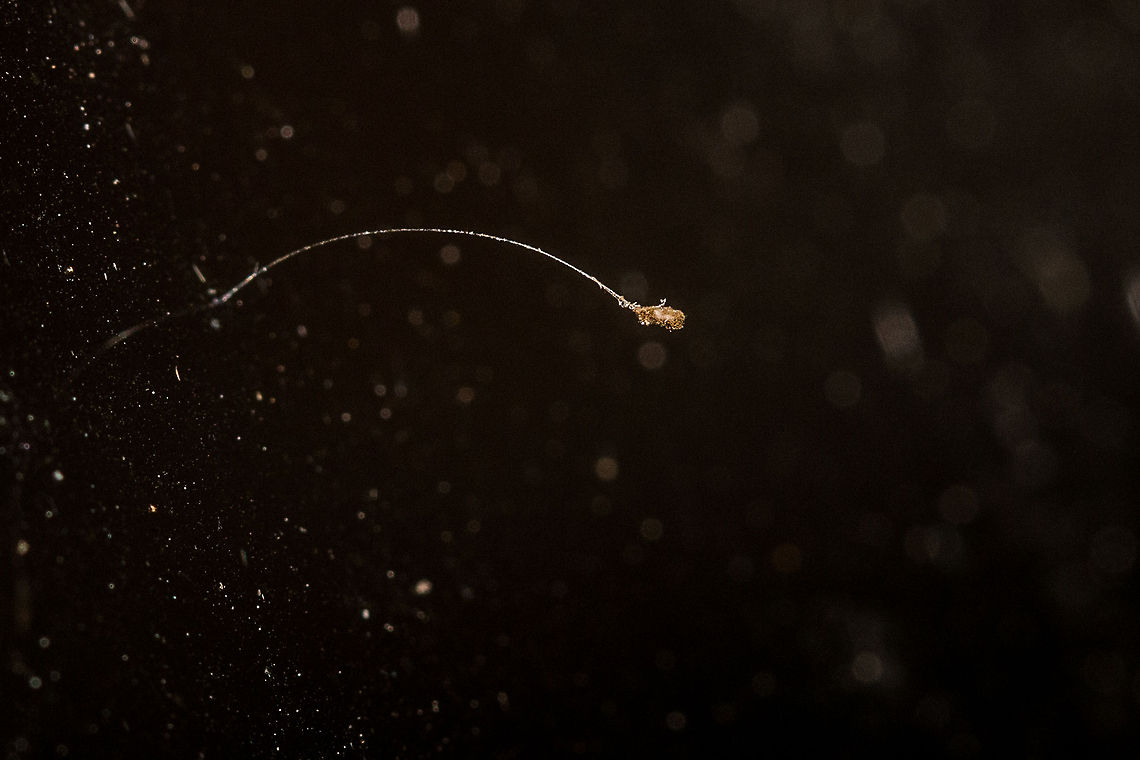 Promoted
Promoted
The egg of a lacewing moth
My apologies again for poor macro work however, this was too fascinating not to post!
Found a whole row of these 'things' (appx 10mm long) on the window last night and I have discovered that they are the eggs of either a lacewing moth or an antlion. It appears that 'Mother Nature has developed this ingenious method to perpetuate the Lacewing. Immature lacewings are fierce hunters, and if eggs hatched, the young would quickly devour one another. The female Lacewing deposits each egg at the end of a stalk, so by the time a newly hatched Aphid Wolf or Aphid Lion climbs down, its brothers and sisters have already wandered away.' (http://www.whatsthatbug.com/2005/08/12/lacewing-eggs-2/)
No species identified
The species on this photo is not identified yet. When signed in, you can identify species on photos that you uploaded. If you have earned the social image editing capability, you can also identify species on photos uploaded by others.

comments (3)
and the section on reproduction:
'Eggs are deposited at night, singly or in small groups; one female produces some 100–200 eggs. Eggs are placed on plants, usually where aphids are present nearby in numbers. Each egg is hung on a slender stalk about 1 cm long, usually on the underside of a leaf. Immediately after hatching, the larvae moult, then ascend the egg stalk to feed. They are voracious predators, attacking most insects of suitable size, especially soft-bodied ones (aphids, caterpillars and other insect larvae, insect eggs, and at high population densities also each other). The larvae may also occasionally bite humans, possibly out of either aggression or hunger. [3] Therefore, the larvae are colloquially known as "aphid lions" (also spelled "aphidlions") or "aphid wolves", similar to the related antlions. Their senses are weakly developed, except that they are very sensitive to touch. Walking around in a haphazard fashion, the larvae sway their heads from one side to the other, and when they strike a potential prey object, the larva grasps it. Their maxillae are hollow, allowing a digestive secretion to be injected in the prey; the organs of an aphid can for example be dissolved by this in 90 seconds. Depending on environmental conditions, larvae need about 1–3 weeks to pupation which takes place in a cocoon; species from temperate regions usually overwinter as a prepupa, though C. carnea overwinters as newly hatched adults.'
I really do not know why she chose to lay her eggs on my window, I know it is dirty but I don't think that constitutes as 'food'! Posted 11 years ago, modified 11 years ago